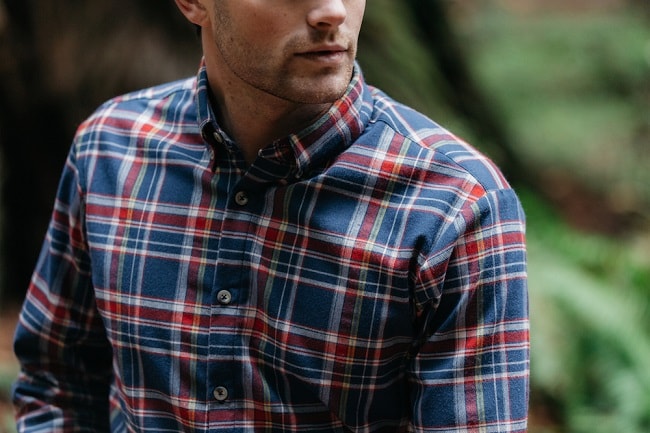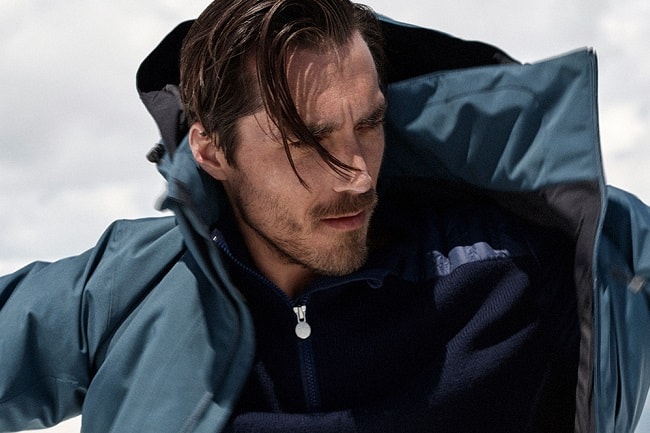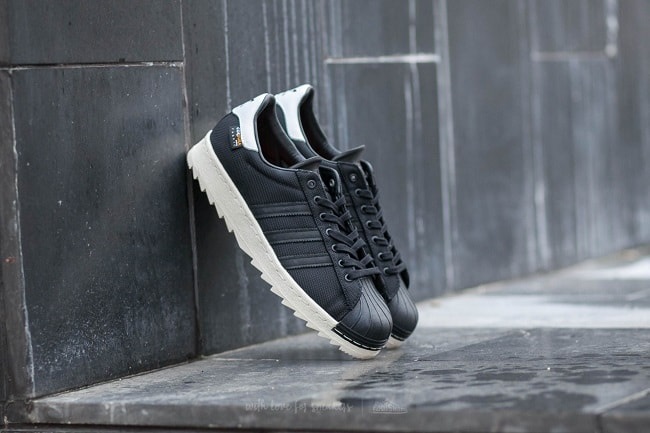1
HOME > Tips & Advice >
COMMON PERFORMANCE MATERIALS, AND WHAT THEY DO
TECH FABRICS ARE NOW EVERYDAY ESSENTIALS
Written by Ivan Yaskey in Tips & Advice on the 15th January 2018

From your button-down oxford to whatever you wear to the gym, you can’t escape performance materials. Does the garment stretch, resist wrinkles, or help with controlling sweat or odours? To some degree, what’s being dubbed a tech fabric or treatment is now an everyday essential. What was initially conceived to help you move during a training session or let your skin breathe in the outdoors isn’t so far removed from your office and casual wardrobes. What looks like a smart shirt or pair of chinos now promises more comfort and less chafing, and may even feature UV-resistant and moisture-wicking treatments to help you out during a round of golf. Travel-specific attire, too, builds upon this concept, giving you a somewhat fashion-forward piece infused with properties designed to resist water, repel stains, flex and move for a range of activities, and quickly dry.
In a sense, athleisure’s growth combined with the average person’s desire for comfort has made performance fabrics more commonplace. But, rather than make assumptions about what these materials do, get familiar with standard fabrics and treatments:

Blended Textiles
This isn’t your run-of-the-mill polyester/cotton blend – a mainstay of many T-shirts. Rather, multiple fibres may be woven together to create something with a range of properties – strength, flexibility, and greater moisture resistance, for instance. Under Armour’s Charged Cotton is one such example: Created for athleticwear, the proprietary material feels like its namesake, but through blended construction, performs more on par with polyester. After all, cotton alone dries far more slowly than synthetics, absorbs rather than sheds moisture, and may cause you to sweat. Although blended textiles come in an array of combinations, they usually involve:
• Nylon, a synthetic fabric that’s mildew resistant, quick drying, sweat wicking, and breathable.
• Polyester, another synthetic material that resists wrinkles, offers some breathability, and feels lightweight. Unlike nylon, it tends to be stronger, offers some UV resistance, and even has moderate insulation properties. As a downside, polyester tends to hold onto odors over time.
• Polypropylene, a plastic-based, water-resistant, moisture-controlling material that’s commonplace in base layers.
• Spandex, also known as Lycra, gives your apparel – from khakis and jeans to workout tees – some degree of stretch – up to six times its size, supposedly – for a greater range of motion. Like other synthetics, it infuses your garment with a bit of breathability, quick-drying, and moisture-wicking properties.
Specifically, within menswear, one or more of the above may be blended with cotton for some structure. Purely synthetic fabrics, by contrast, tend to be light and shapeless.

Wool
Most consider wool the original performance fabric; just look to the history of Tweed to understand all it can do in the outdoors. On its own, it makes a dependable temperature regulator, holding onto body heat yet still letting your skin breathe. Its fibres, overall, tend to have a lighter-weight construction, so they’re added to hats, gloves, and socks for a natural combination of moisture control and odour resistance.
Gore-Tex
Back in the ‘90s, Seinfeld made this waterproof, cold-weather material better known, and these days, you won’t only find it within your puffer jacket but also in hiking, storm, and even work boots and gloves. So, what exactly is Gore-Tex? Unlike other waterproof fabrics, it specifically works as a two-way membrane made out of expanded polytetrafluoroethylene, a fine, porous material that’s bonded to two layers of textiles. The resulting laminate then completely blocks water from the outside, yet doesn’t compromise on breathability from the interior. In response, all that sweat theoretically building up in your boots also gets to escape.

Water-Resistant and Waterproof Fabrics
Typically, any garment or set of boots labeled “waterproof” or “water resistant” has some kind of coating or treatment. In most cases, the fabric’s surface is sprayed to withstand light to medium rain for a certain amount of uses; in others, like with Timberland’s work boots, the tanning process can impregnate leather with waterproof properties, which an interior membrane then supplements. In all cases, water-resistant and waterproof pieces tend to reduce breathability, and the treatment itself starts to fade after a few washes. Understand, though, that wearing something fully waterproof – for instance, a hardshell windbreaker – often traps sweat. While the material, generally with a stiff, plastic-like consistency, fully repels the elements, it almost acts like Clingfilm around your body. As such, you can counteract those effects with a moisture-wicking base layer underneath – common with outdoor layering systems – or go with a jacket that’s simply water resistant.
Polartec
In common usage, “performance fleece” also dates back to the ‘90s – likely from those Old Navy commercials – but Polartec’s range proves to be the real deal. While fleece, itself generally a blended textile, tends to offer warmth retention, Polartec incorporates wool-like properties and has a much lighter weight. The result not only does what it should but also doesn’t feel heavy, won’t trap moisture, and offers some moisture control.

Coolmax
Plenty of brands have developed their own moisture-wicking treatments and fabrics, but Coolmax, created by DuPont Textiles in the mid ‘80s, often seems to be the go-to material for this purpose. As such, you’ll find it included in anything from workout pants to sports jerseys to wick sweat away from the skin and to the material’s surface, where it then evaporates. Breathability supplements this basic property to keep you all-around cool and dry.
Cordura
Although the typical performance fabric is lightweight and somewhat flexible, Cordura – usually a high-denier nylon blend – goes in the opposite direction. That is, whether it’s used for workwear, a pack, or even tactical clothing, its looped structure offers the same amount of abrasion resistance as cotton duck – another workwear staple – but has a lighter weight and less of a tendency to tear.


Trending
2
3
4
5
6
7
8
9
10










